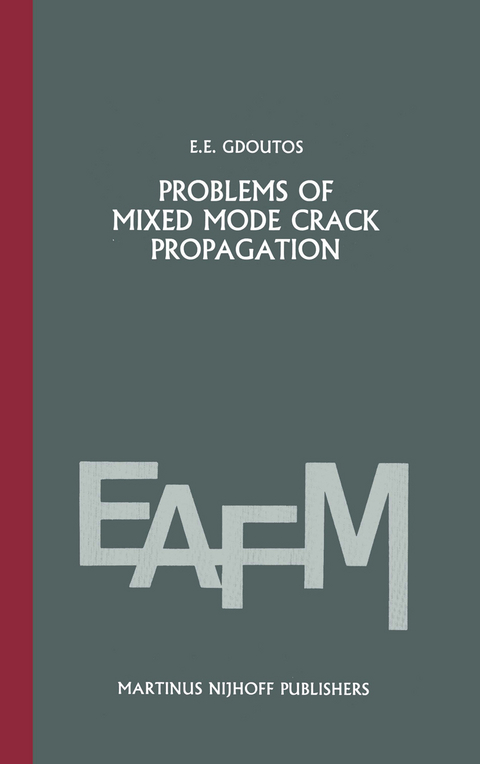
Problems of mixed mode crack propagation
Springer (Verlag)
978-94-009-6191-3 (ISBN)
1. The strain energy density criterion.- 1.1. Introductory remarks.- 1.2. The strain energy density concept.- 1.3. Basic hypotheses of the theory.- 1.4. Fracture trajectories.- References.- 2. The general two-dimensional crack problem.- 2.1. Introduction.- 2.2. Strain energy density theory for the two-dimensional crack problem.- 2.3. The infinite plate with an inclined crack under uniform uniaxial stress.- 2.4. Finite width effects on the crack extension angle.- 2.5. The cracked plate subjected to a concentrated force or moment.- References.- 3. Branched cracks.- 3.1. Introduction.- 3.2. The symmetrically branched crack.- 3.3. The asymmetrically branched crack.- 3.4. The bent crack.- 3.5. Crack branches emanating from an elliptical crack.- References.- 4. Interacting cracks.- 4.1. Introduction.- 4.2. Two equal skew-parallel cracks.- 4.3. Two equal symmetrically inclined cracks.- 4.4. Two equal inclined cracks.- 4.5. X-formed arrays of cracks.- References.- Chapters 5. Arc-shaped cracks.- 5.1. Introduction.- 5.2. The circular crack under uniform stress.- 5.3. A periodic array of circular cracks.- 5.4. A star-shaped array of circular cracks.- References.- 6. Cracks emanating from holes and rigid inclusions.- 6.1. Introduction.- 6.2. Two equal cracks emanating from a circular hole.- 6.3. An array of surface cracks emanating from a circular hole.- 6.4. Fracture of a plate with a rigid inclusion having cuspidal points.- 6.5. Fracture of a plate with a rigid fiber inclusion.- References.- 7. Composite materials.- 7.1. Introduction.- 7.2. A bimaterial plate with a crack arbitrarily oriented to the interface.- 7.3. A three-layered composite with cracks.- 7.4. A bimaterial plate with a circular crack.- 7.5. A bimaterial plate with a crack along the interface.- 7.6. Interaction between a crack and a circular inclusion.- References.- 8. Plates and shells.- 8.1. Introduction.- 8.2. A cracked bent plate with an inclined crack.- 8.3. A cracked cylindrical shell with semispherical heads.- References.- 9. Three-dimensional crack problems.- 9.1. Introduction.- 9.2. The elliptical crack.- References.- Author index.
| Reihe/Serie | Engineering Applications of Fracture Mechanics ; 2 |
|---|---|
| Zusatzinfo | XIV, 204 p. |
| Verlagsort | Dordrecht |
| Sprache | englisch |
| Maße | 155 x 235 mm |
| Themenwelt | Sachbuch/Ratgeber ► Natur / Technik ► Garten |
| Naturwissenschaften ► Physik / Astronomie ► Mechanik | |
| ISBN-10 | 94-009-6191-X / 940096191X |
| ISBN-13 | 978-94-009-6191-3 / 9789400961913 |
| Zustand | Neuware |
| Haben Sie eine Frage zum Produkt? |
aus dem Bereich


